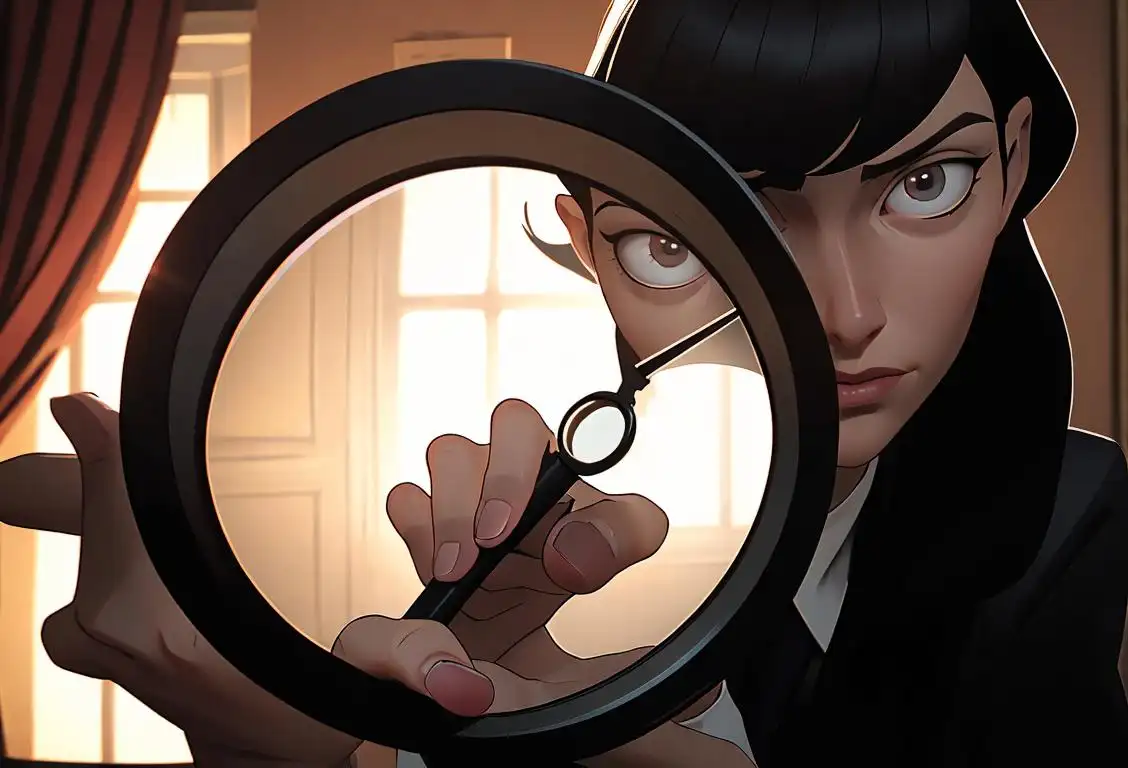National Backstabber Day

Welcome to the intriguing world of National Backstabber Day! Brace yourself for a rollercoaster of trust issues, covert operations, and a sprinkle of betrayal. This national day is a unique opportunity to reflect on those sneaky moments when someone unexpectedly sticks a metaphorical knife in your back. So, grab your spy gear, keep a watchful eye, and dive into the fascinating history of National Backstabber Day.
When is Backstabber Day?
It's national backstabber day on the 9th June.
A Slice of Betrayal:
When it comes to backstabbing, history is rife with tales that would make even the most cunning double agent blush. From ancient empires to modern politics and even the cutthroat world of showbiz, backstabbing has always found its place in human interactions.
Although the origins of National Backstabber Day are shrouded in mystery, we do know that it emerged from the fertile grounds of the internet. It seems that someone, somewhere, decided to honor those who leave us wounded and bewildered by dedicating a day to their devious ways.
On this day, people from all walks of life take a moment to reflect on their own experiences with backstabbing and perhaps even find solace in the fact that betrayal is a universal human experience. It's a day when you can laugh off the pain and celebrate the phoenix-like rise from the ashes of those who have done you wrong.
So, how should one celebrate National Backstabber Day? Well, you could start by compiling a list of the most memorable backstabbing incidents in history. From Brutus' betrayal of Julius Caesar to Judas handing over Jesus, there's no shortage of treachery to explore. And if you're feeling especially mischievous, you could even host a game night where friends vote for the best fictional backstabber in movies or literature.
Fun Facts to Unveil:
Did you know that backstabbing isn't just reserved for humans? Oh no, animals can be quite skilled in the art of deception too! For example, the female praying mantis is famous for its habit of devouring its mate after mating. Talk about a shocking betrayal, right?
History behind the term 'Backstabber'
1594
Etymology of 'Backstabber'
The term 'backstabber' originated in the late 16th century. The term is derived from the combination of two words: 'back' and 'stab.' 'Back' refers to the rear part of the body, and 'stab' means to thrust or pierce with a sharp object. This term gained popularity due to its vivid imagery, suggesting the idea of betrayal through a sudden and unexpected attack from behind.
1867
Emergence of Figurative Use
In the mid-19th century, the term 'backstabber' started to gain figurative usage. It began to be used to describe someone who betrays or deceives others, especially when they do so in a cunning or secretive manner. This figurative use of 'backstabber' became more prevalent as people recognized the impact and emotional weight of betrayal in interpersonal relationships.
1934
Introduction in Literature
The term 'backstabber' made its way into literature in the 1930s. Writers and authors recognized the power of this term to evoke strong emotions and create tension within a story. It became a popular choice to describe characters who were deceptive, manipulative, or untrustworthy. This literary usage further solidified the term's place in popular culture.
1970s
Popularity in Pop Culture
During the 1970s, 'backstabber' became a buzzword in popular culture. It entered mainstream consciousness through music, movies, and television shows. The term was often used in song lyrics to express feelings of betrayal and mistrust in relationships. It also became a trope in movies and TV series, portraying characters who were willing to betray their friends or allies for personal gain.
Present
Continued Usage and Cultural Impact
In the present day, the term 'backstabber' has remained a powerful and widely recognized descriptor. It continues to hold cultural significance, resonating with people who have experienced the pain of betrayal. The term is often used in various contexts, such as politics, friendships, and workplace dynamics, highlighting the lasting impact of betrayal on individuals and society as a whole.
Did you know?
Did you know that backstabbing isn't just reserved for humans? Oh no, animals can be quite skilled in the art of deception too! For example, the female praying mantis is famous for its habit of devouring its mate after mating.Tagged
awareness funFirst identified
9th June 2017Most mentioned on
9th June 2017Total mentions
5Other days
Nurses Day
Former Prisoner Of War Recognition Day
Press Day
Handloom Day
Heroes Day
Memorial Day
Dance Day
Bestfriends Day
Liberation Day
Love Your Pet Day









